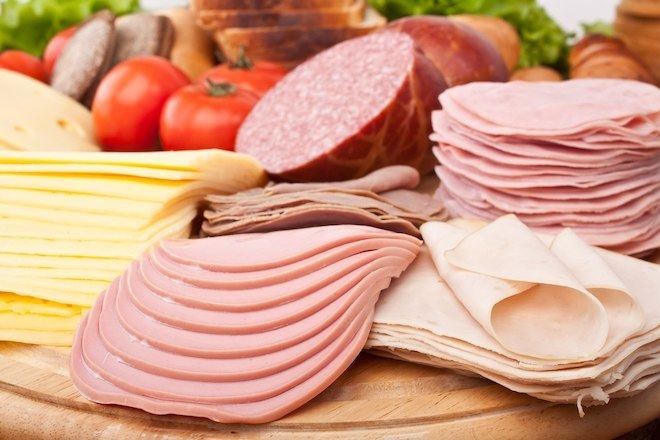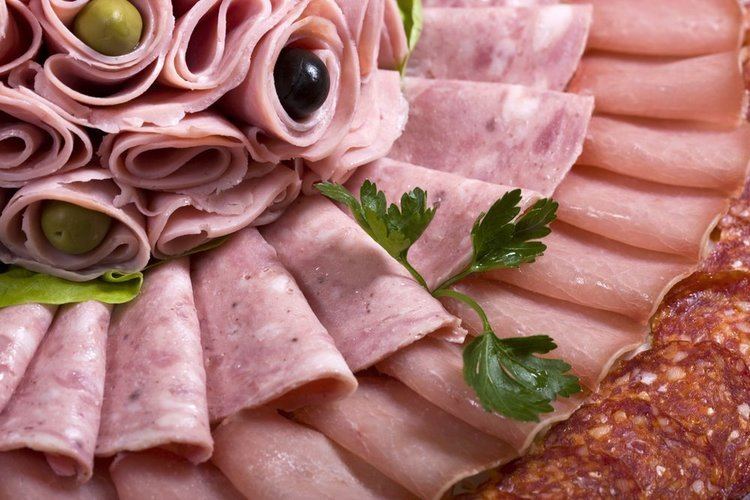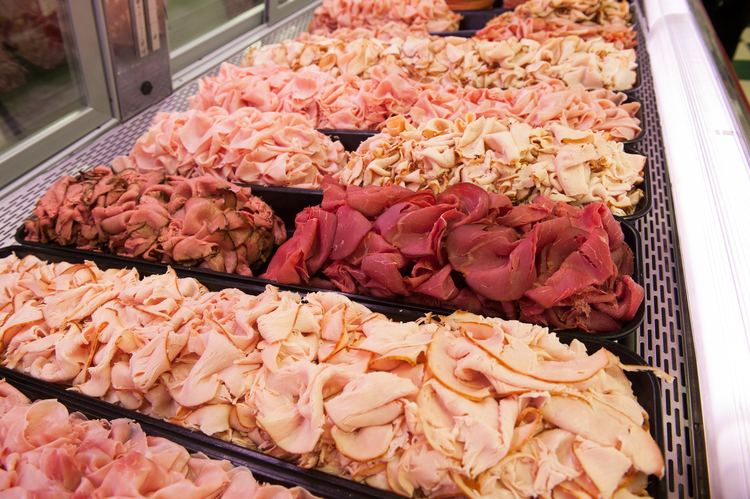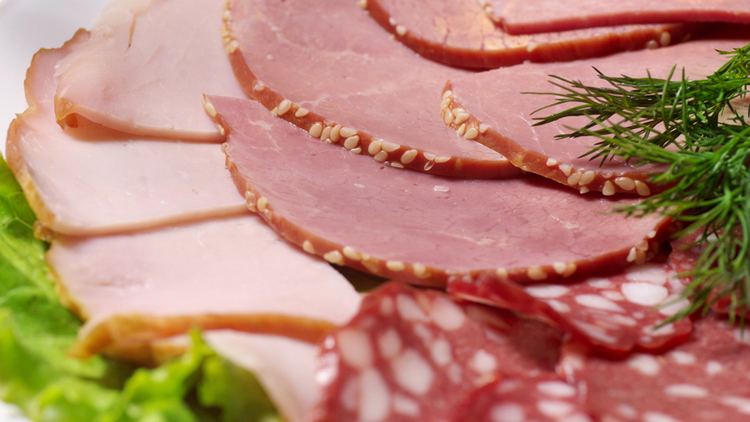 | ||
Alternative names Cold cuts, luncheon meats, sandwich meats, cooked meats, sliced meats, cold meats, deli meats Similar Salami, Meat, Cheese, Embutido, Mortadella | ||
Homemade lunch meat
Lunch meats—also known as cold cuts, luncheon meats, cooked meats, sliced meats, cold meats, smallgoods, Colton and deli meats—are precooked or cured meat, often sausages or meat loaves, that are sliced and served cold or hot on sandwiches or on party trays. They can be bought pre-sliced in vacuum packs at a supermarket or grocery store, or they can be purchased at a delicatessen or deli counter, where they might be sliced to order.
Contents
- Homemade lunch meat
- Vegan taste test lunch meat
- Health
- Safety
- Commonwealth countries
- Latin America
- Types
- References

Vegan taste test lunch meat
Health
The World Cancer Research Fund International guidelines on cancer prevention state avoiding all processed meats.
Most pre-sliced lunch meats are higher in fat, nitrates, and sodium than those that are sliced to order, as a larger exposed surface requires stronger preservatives. As a result, processed meats significantly contribute to incidence of heart disease and diabetes, even more so than red meat.

A prospective study following 448,568 people across Europe showed a positive association between processed meat consumption and mortality, due to cardiovascular diseases and cancer. Similarly, a prospective study in United States following half a million people concluded a similar association with death and increased processed meat consumption.
Safety
The US Centers for Disease Control and Prevention advises that those over 50 reheat lunch meats to "steaming hot" 165 °F (74 °C) and use them within four days.
Commonwealth countries

In Commonwealth countries, luncheon meat specifically refers to products that can include mechanically reclaimed meat and offal. In these countries, the terms cold meats, cooked meats, deli meats or sliced meats are used instead.
Latin America

In Guatemala, a lunch meat is a traditional dish eaten in November. It is eaten the first and second day of the month to celebrate "El día de Todos los Santos" (All Saints' Day) and "El día de Todos los Difuntos" (All Souls' Day). There are two types: red and white.
